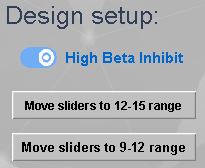SMR (Sensorimotor Rhythm) Training
SMR is always trained with eyes open.
Finding the optimal frequency
Adults
In adults, alpha is expected to have its peak at 10 Hz in a band from 8-12 Hz, so SMR is likely to be around 12-15 Hz. However some feel more comfortable lowering it a bit to 11.5 to 14.5 or 11 to 14 Hz. In adults start at 12-15 Hz and adjust it downward a little at a time if you don’t get the desired response.
Children
For those younger than 16 years, SMR will almost certainly be a lower frequency. You can look for the alpha band by looking at the power spectrum (brain mirror display) at P4 with eyes closed and eyes open. In most people a particular band will surge out and become dominant with eyes closed and then drop down sharply when eyes are opened. When you know where alpha is, then SMR is likely to be just above that.
In children of 8 years, the peak alpha frequency is often around 8 (perhaps lower in children who are behind the developmental curve, as most ADHD people are), so the alpha band might be closer to 6.5-9.5 Hz, which would put SMR around 9-12 Hz. Start at 9-12 Hz with younger children. Titrating down the frequency further will end up discovering a band where the body begins to relax and slump, eyes get heavy, breathing deepens and the client gets still. Some will even fall asleep.
Adjusting the SMR Band
Brain-Trainer for BioEra
1. Use the sliders or select a pre-set option to set the starting frequency range.
2. Press the left or right arrows to move the entire frequency band .1 Hz – .5 Hz lower or higher.


BioExplorer
1. Open the Filters tool. Leave it open while training.
Select Tools | Filters and click SMR filter to select it. (Select the default 12-15 or use 9-12 if you have pressed a button to select 9-12Hz SMR.)
2. Adjust the frequency
Press the left arrow button on your keyboard to move the entire frequency band .1 Hz -.5 Hz lower. Right arrow button will increase frequency.
The response you want the body to have is to feel limp and as though melting into the chair. Breathing should slow and the body should feel heavy. If it feels like muscles are tense instead of limp then you are training too high. If the client becomes drowsy, you can start bumping the frequency back up 0.1 Hz at a time.
If present in a design, you can also push the “HI BETA OFF” button so the status reads “Hi Beta Down” so that you will also be training high beta down. Sometimes the trend line will respond according to what your body is experiencing. If the trend line – high beta – goes up then you may be getting more tense. If the trend line goes down then it could be a sign that your muscles are becoming more loose.
If the trainee feels either more fidgety or very sleepy you may be training at too low a frequency so adjust the filter upward. It may take about five minutes for you to notice any response to a particular frequency. The key is to see the client’s body relax, muscle tone dropping significantly, and often becoming sleepy.;
Length of training
This can vary depending on the trainee and situation. If you have found the optimal frequency, you can try 15 minutes.